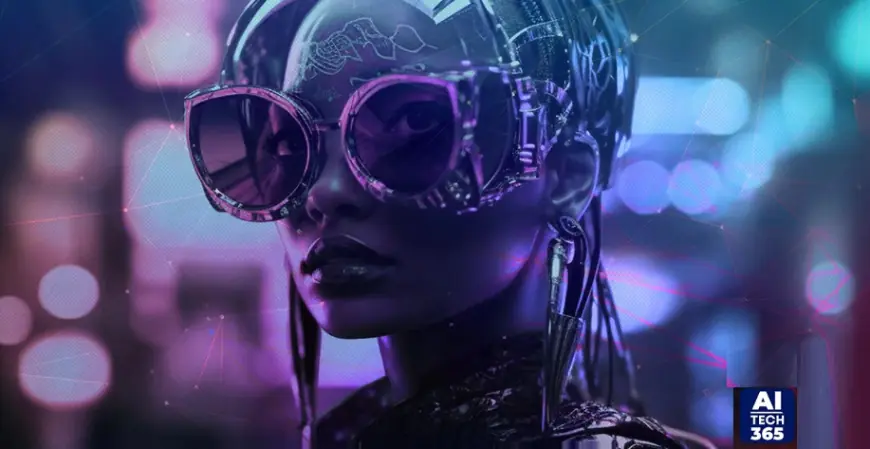Understanding Humanoids: A Deep Dive Into Human-Like Robots
Humanoid robots are making waves across industries, sparking conversations worldwide. These machines, designed with human-like features and movement capabilities, are attracting major investments from tech giants.

Humanoid robots are making waves across industries, sparking conversations worldwide. These machines, designed with human-like features and movement capabilities, are attracting major investments from tech giants. Companies like Microsoft, OpenAI, and Nvidia have backed Figure AI, a $2.6 billion startup in the humanoid space, while Tesla's Optimus robot is already in operation. According to Goldman Sachs, humanoid robot sales could reach $38 billion globally by 2035—despite the technology still being in its formative years.
In this article, we’ll explore what humanoids are, how they work, and where they’re making an impact.
What Exactly Is a Humanoid?
A humanoid refers to any entity that resembles human physical attributes—like upright posture, binocular vision, and dexterous limbs. In the robotics world, humanoids are machines built with a human-like body structure: two arms, two legs, and a head. However, they don’t necessarily need to look human to perform tasks similar to us.
While the concept has roots in science fiction, today's humanoids are at the forefront of industrial automation and AI-driven innovation.
The Core Technologies Powering Humanoids
Humanoid robots integrate a range of cutting-edge technologies that allow them to sense, move, and interact with their environments:
-
Sensors: These devices enable robots to perceive their surroundings—detecting touch, temperature, sound, and visual cues.
-
Artificial Intelligence: AI helps humanoids understand language, recognize objects, learn from experience, and respond intelligently.
-
Computer Vision: With this tech, robots can recognize faces, read gestures, and analyze visual data, much like humans do.
-
Mechanical Design: Engineered with sophisticated joints, actuators, and materials, humanoids can perform fluid human-like movements such as walking, waving, or dancing.
Also Read: What Makes Explainable AI Techniques a Game-Changer in AI Development?
Real-World Applications of Humanoid Robots
Humanoids are stepping into diverse roles across multiple sectors:
-
Banking: Robots like Softbank’s Pepper personalize customer interactions by learning user behavior, preferences, and emotional cues.
-
Education: In North Korea, Russian-made Promobot V.2 is being used to assist teachers in classrooms, showcasing its utility in student assessment and curriculum delivery.
-
Exploration: Stanford’s OceanOne is a prime example of a humanoid exploring underwater environments using haptic feedback and AI.
-
Space: NASA’s Robonaut 2, developed with General Motors, has supported astronauts aboard the ISS in completing complex tasks.
-
Manufacturing: Humanoids are easing workloads by taking over repetitive tasks. Nvidia’s GR00T platform, for instance, enables robots to train autonomously.
-
Entertainment & Social Roles: Hanson Robotics' Sophia is globally recognized for engaging in human-like conversations, media appearances, and emotional expression.
Are Humanoids Ready for Mainstream Adoption?
While humanoid robots are making progress, their real-world utility is still under scrutiny. Elon Musk envisions a future where every person owns multiple Optimus robots, projecting Tesla’s market value to soar. Though ambitious, such visions reflect growing optimism around robotics.
Figure AI’s integration with ChatGPT and its $675 million funding round suggest that industry stakeholders are betting big on this space. In China, Ex-Robots has introduced Xiaoqi, an emotional interaction robot that wowed audiences at the 2024 World Intelligence Expo. "We focus on making robots more emotionally expressive and capable of deeper human interaction," said Qu Yan from Ex-Robots.
However, AI’s real-world implementation often comes with hiccups. While chatbot demos might look seamless, performance in live environments can be unpredictable. Still, the growing investments and technological breakthroughs indicate strong momentum.
Final Thoughts
Humanoid robotics isn’t just a buzzword anymore. As companies like Boston Dynamics, OpenAI, Nvidia, and Tesla continue pushing boundaries, humanoids are transitioning from experimental prototypes to real-world solutions.
Though the future remains uncertain, one thing is clear: humanoid robots are poised to redefine how we work, interact, and live. Whether in factories, classrooms, or outer space, their presence is growing—and the journey has only just begun.
Also Read: What Is AI in Contract Management & How It Helps to Avoid Costly Mistakes?
#binocularvision #humancharacteristics #humanoidrobots #roboticprocessautomation
What's Your Reaction?
 Like
0
Like
0
 Dislike
0
Dislike
0
 Love
0
Love
0
 Funny
0
Funny
0
 Angry
0
Angry
0
 Sad
0
Sad
0
 Wow
0
Wow
0

















































